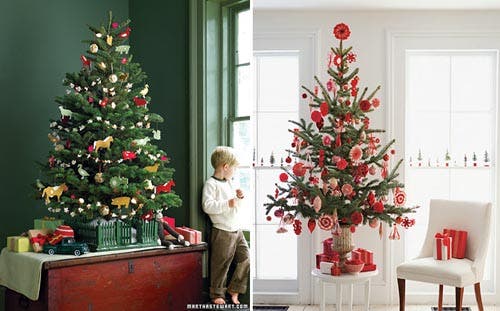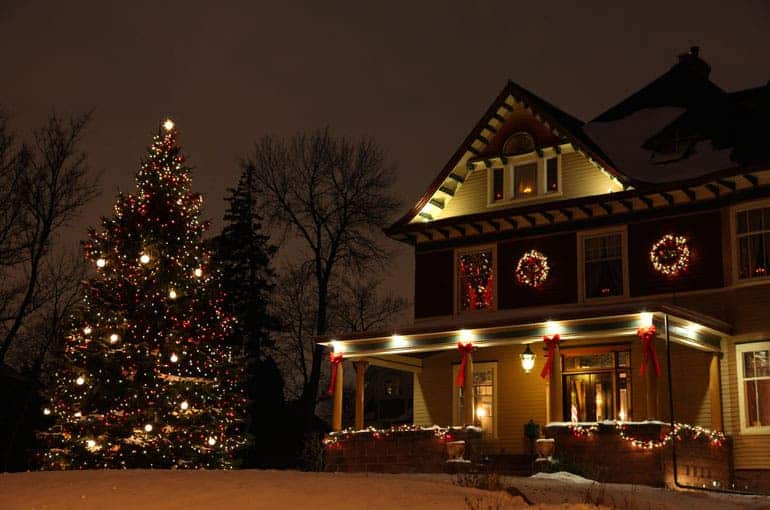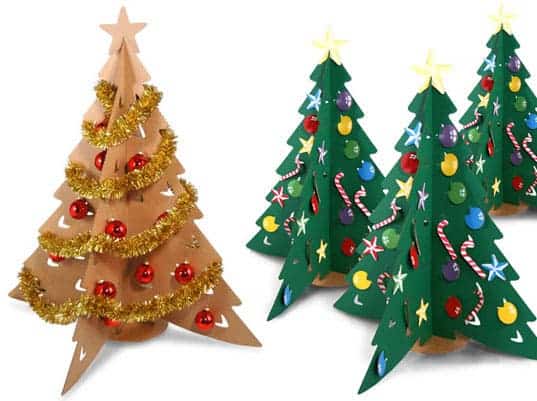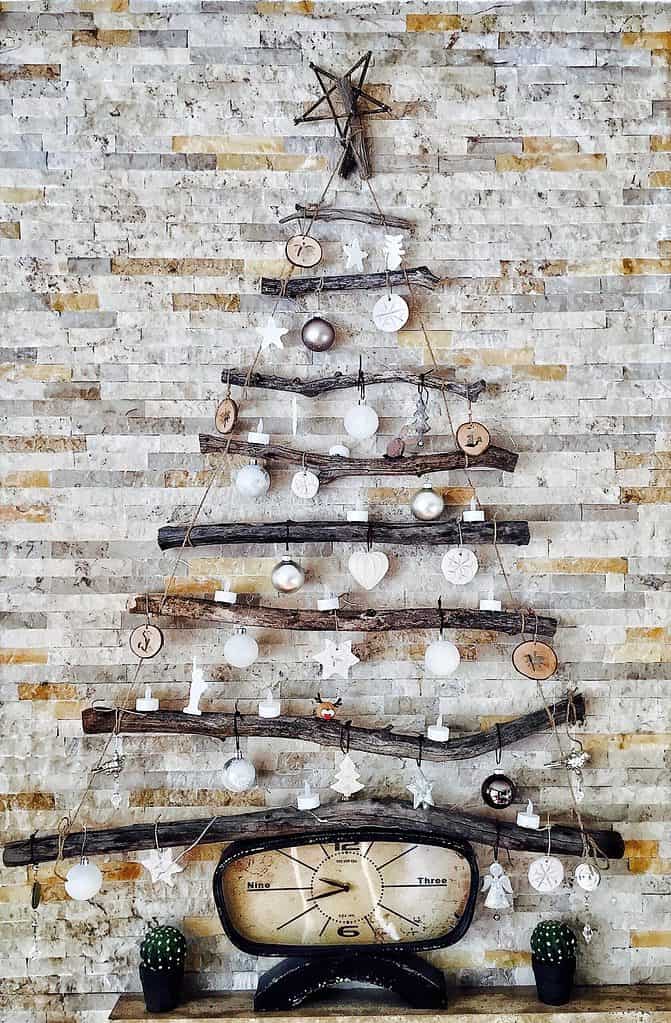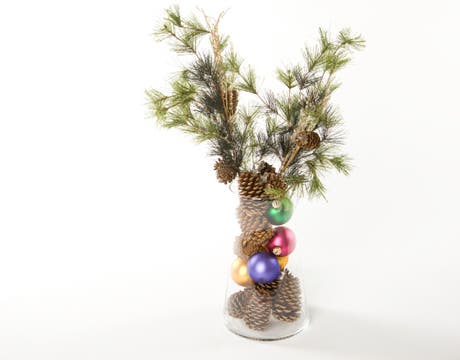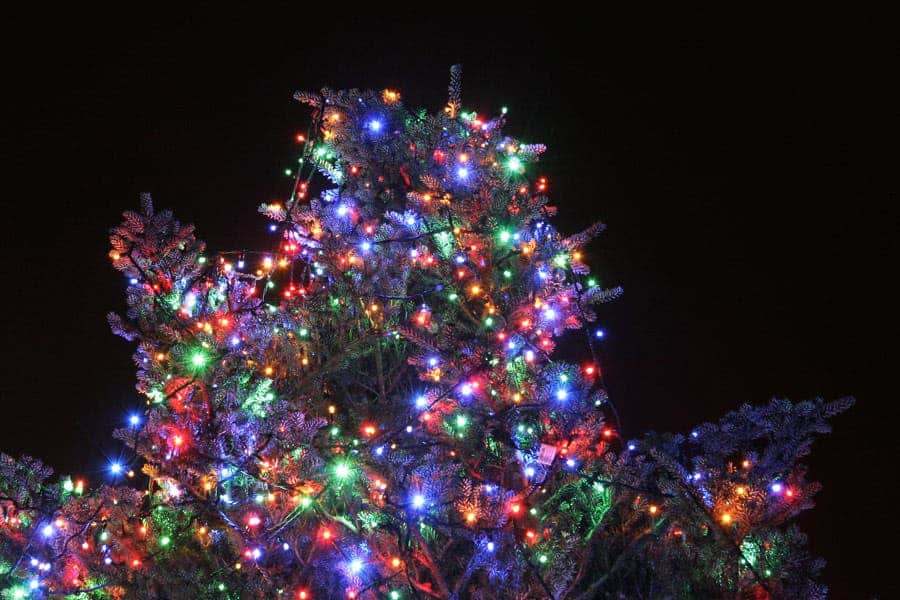Christmas is just around the corner, and the good old Christmas tree is one of the most enjoyable traditions of the holiday season. Thankfully, more and more people are starting to realize that cutting a tree and ultimately throwing it in the street or in the dump is not the way to go if you care about the environment, but using an artificial Christmas tree is not ideal either due to the emissions and plastic pollution it produces.
But that doesn’t mean you can’t have an awesome and sustainable holiday — here are some of the best eco-friendly tips to have the greenest and most awesome Christmas tree ever!
Go for a living (potted) tree
Living trees produce oxygen, suck up carbon dioxide, and are a pleasant sight all year round, even without the Christmas decorations. You don’t have to kill a tree, and you get to keep that natural tree looking and smelling year after year. These living Christmas trees are usually pretty small, but you can use that to your advantage: you don’t need so many decorations, and you can put one (or why not, 2 or 3) in each room.
There is one thing you have to be careful about though – they don’t really thrive indoors. Most varieties don’t survive more than two weeks indoors, so you have to either:
- plant them in a garden or on your lawn;
- store them outside on your porch/balcony;
- have a company replant them.
They can deal with the cold temperatures and snow – no problem; they also do well in almost any soil, so you shouldn’t worry about that – just be sure that you get them outside after 7-14 days. This is probably the best option for a truly green Christmas tree – not only are you not doing any damage to the environment, but you’re actually helping the planet, and you get to enjoy the real deal.
Try a rosemary tree!
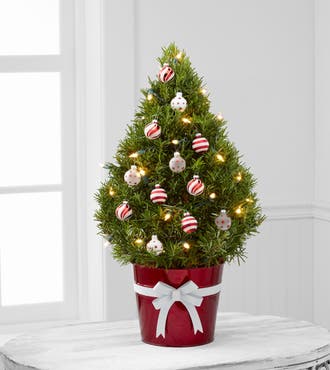
Who says it has to be a pine or a fir? If you just want a small Christmas Tree, rosemary is just perfect! You can find these cute little trees pretty much everywhere online.
They look Christmasy, they smell great, they thrive indoors, and they provide healthy, tasty herbs throughout the entire year. What more can you want?
Rent a (potted) tree
Again, living trees emit oxygen, and they improve the air quality, making us feel better. This also ensures that the trees aren’t killed just so that we can enjoy them for a meager period. These trees are typically planted somewhere, cared for all year round by the company, and just placed in special pots when they are delivered. You also don’t need to do anything, avoiding the rush and crowd that always seems to accompany Christmas tree shopping – the trees are delivered to your doorstep.
This may or may not be an option – depending on where you live, but Google’s your friend here! Virtually all major American cities have this service available, and the trend is also rising in Western Europe. Just type ‘Rent Christmas tree [city where you live]’, and you should be good to go.
If you buy a cut tree, at least recycle it!
There’s nothing sadder than putting a Christmas tree to waste after the winter holidays are over! So if you really want to buy a cut tree, there are still some things you can do to recycle it.
The best thing would be to plant it. If you have a garden or a backyard, it’s perfect! If you’ve got the space for it, getting a tree with roots and replanting it is obviously the most eco-friendly solution. If that is not an option, then there are some things you can do, like recycling it into compost. Most cities offer these options (or host companies that do this for you); the tree is still killed, but at least the timber won’t go to waste. In isolated cases, you can also stuff it in a private pond – it offers refuge to fish and provides a nice addition to their ecosystem. Just be sure that it hasn’t been sprayed with damaging chemicals.
If you’re stuck with no backyard, no pond, and no compost recycling, you probably shouldn’t buy a cut tree in the first place.
Decorate an outside tree!
Sure, it may not be traditional and you won’t get the Christmas tree smell in your living room, but the cheapest option is to simply decorate an outdoor tree for Christmas. You’ll have more money for decorations, and it will make for a pleasant sight for all the people passing by — truly a great way of sharing the Christmas spirit. If you decorate a tree that you can actually see from your window, you’ll feel like it’s actually inside your home!
Tip: be extra careful if you’re doing this in a stormy area, the decorations may fly or fall over.
If you’re thinking about a plastic tree… think again!
An artificial Christmas tree might seem like the greener option, but that’s rarely the case. They’re typically made from PVC, which is hard to recycle; as Grist puts it: “No vinyl, ever! We are boycotting vinyl to the greatest extent possible”. Furthermore, most of them also contain lead, which is commonly used to stabilize PVC products. But that doesn’t mean we should take faux trees out of the question, just that we have to be a touch more creative.
Try wood or cardboard tree
Skip the cheap, impersonal, made-in-China Christmas trees. Why not go for a nicer and more interesting alternative, one made from wood or cardboard tree, or a plywood tree, or any other option your imagination can conjure?
Creativity can really come in handy here if you want to build a DIY tree, but there are already multiple options you can purchase if you don’t want the hassle.
Make your own tree from branches and cones!
This is another ultra-cheap, green way to have a nice, eco-friendly Christmas. You can use a couple of small branches, cones, driftwood — just get creative. This is a great idea to try with your children – just let your imagination fly while having quality time with your little ones and teaching them healthy environmental values at the same time!
BONUS: use LED lights
No Christmas celebration is complete without multi-colored lights. LED Christmas lights consume 90% less energy than incandescent lights, they’re made with less polluting substances and the LEDs never get broken (unless you smash them or something) – so there’s no reason not to use them instead of the traditional lights.
Here’s to a Green Christmas!
